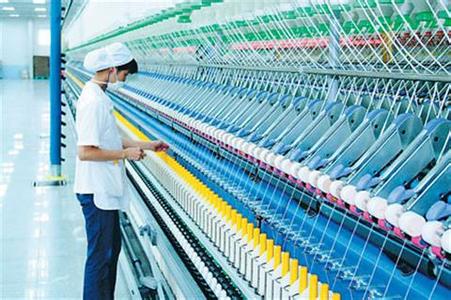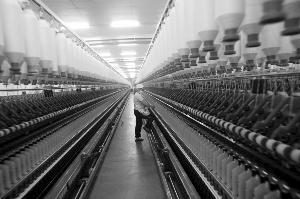The effect of decree decree since 2016 has continued to haunt small and medium-sized retailers engaged in denim business. This was combined with the introduction of the Goods and Services Tax (GST) and the rise in cotton prices, which apparently had an adverse effect on their business and caused losses.
Many retailers claim that their loyal customer base has been eroded and that cash flow has become quite slow. The decree or decree not only burned holes in their pockets, but also forced them to use cashless transactions, which were the cause of the loss.

According to Vishal Dubey, managing partner of the Indian company based in Bangalore, Denmark, “The effect of decree decree has remained on every retailer. They are now experiencing a different type of economic recession. They no longer exist in the system. In cash transactions, wholesalers insist that transactions take place online and it is very difficult for retailers to reap profits."
In the context of the economic downturn, retailers have no other choice but to cut the price of denim products. Another retailer, Suresh Agarwal, owner of Anant Apparels, headquartered in Ahmedabad, said: "Retailers are looking for other promotional means - by selling large quantities of goods."
Sanjay Soni, owner of Mas Enterprises in New Delhi, expressed a similar view: “Our turnover has had a series of impacts on other aspects and companies have stagnated. It is not just for retailers, manufacturers and distributors, but even wholesalers. Different cashless trading patterns."
The fiscal new China Manufacturing Purchasing Managers' Index (PMI) announced on March 1 was 51.6, a slight increase of 0.1 percentage point from January, indicating that the company's production and business activities continued to improve slightly.
This trend is different from the National Bureau of Statistics manufacturing PMI. The National Bureau of Statistics announced that the manufacturing PMI for February was 50.3, down 1.0 percentage point from January.
In February, China’s manufacturing output maintained growth, but the growth rate was at a slight level, slightly slowing down from January. According to the respondent manufacturers, the increase in new business has led to an increase in output. In the context of stronger customer demand, the total volume of new orders continues to grow. Although the growth rate of new export orders slowed to the lowest level in three months, the growth rate of new orders still exceeded January.

To save costs, manufacturers continue to compress labor. The February employment index fell to the highest level in three months, but the decline was still slight. At the same time, due to the increase in new orders, the pressure on production has been exacerbated, resulting in a continuous increase in the backlog of manufacturing, but it has slowed down compared to January.
In February, manufacturers’ procurement activities maintained a growth trend, but the increase was smaller. Affected by bad weather, the delivery speed of suppliers continued to slow down, but the delay was still slight. The continued expansion of procurement activities has led to an acceleration of procurement inventory, which has been the highest since the past year and a half. The inventory of finished products also ended in a downward trend for eight consecutive months, which has increased.
The increase in raw material prices continued to slow down to the lowest level in seven months, but the increase was still significant. The interviewed manufacturers generally expressed that they were related to the price increase of raw materials. As a result, manufacturers have also raised their factory prices slightly for the ninth consecutive month, and the rate of increase has been similar to that in January.
For the business prospects for the coming year, the industry’s confidence level was the highest in 11 months, due to improved market conditions and the imminent arrival of new products.
Zhong Zhengsheng, chairman and chief economist at Fortune Capital think tank Monita Research, said that the manufacturing boom in February was slightly higher than that in the previous month, and China’s economic resilience was extended. Looking back, the demand for demand in the March start-up season is picking up. Judging the direction of the Chinese economy in 2018 is critical.
Foreign news, the past week (March 8-14), India's cotton prices fell sharply, cotton yarn prices fell slightly. The price of PSF in India has remained stable, and polyester prices have risen.

According to statistics, in the past week, India's S-6 prices have fallen by Rs 300/km to Rs 41,000/km, down by 0.7%. Prices in Ludhiana have dropped by Rs 1 to Rs 199/kg. Yarn production Profit has recovered. In the past three months, India’s C30S prices have risen by 4.7%, while Pakistan’s has increased by 6.6%.
Due to the continued weakness of the rupee, Indian cotton yarns have maintained a relatively strong competitiveness in the international market. At present, the export price of cotton yarn in India is still at a high level of stabilization. The export price of JC30SFOB is US$3.35/kg, and the export price to China is increased by 2美/kg. In terms of blended yarns, due to the fall in China's PSF prices and the continuous appreciation of the renminbi exchange rate, India's polyester cotton dropped sharply. The T65/C35 30S price dropped by 7 cents/kg, a decrease of 2.5%.
February Finance China's manufacturing PMI rises slightly to 51.6
The increase in raw material prices continued to slow down to the lowest level in seven months, but the increase was still significant.






